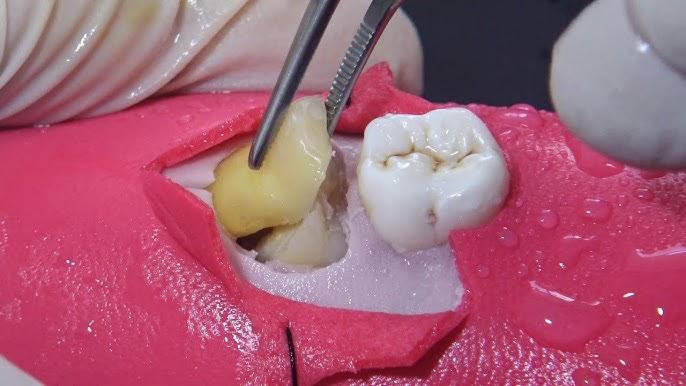Wisdom tooth removal, also known as third molar extraction, is a common dental procedure performed to alleviate pain, prevent overcrowding, and address potential oral health issues caused by impacted or problematic wisdom teeth. While the extraction process itself is relatively straightforward, patients may experience various symptoms during the recovery period. This article explores the four primary symptoms commonly associated with wisdom tooth removal, providing insights into what to expect post-surgery, management strategies, and when to seek professional guidance.
Understanding Wisdom Tooth Removal
Wisdom teeth, or third molars, typically erupt between the ages of 17 and 25. For many individuals, these teeth may not fully erupt or may grow at an angle, causing pain, crowding, or potential damage to neighboring teeth. In such cases, a dental professional may recommend wisdom tooth removal to prevent complications and maintain oral health.
The extraction process involves numbing the area with local anesthesia or administering general anesthesia for more complex cases. The tooth is then carefully loosened and removed from the socket in the jawbone. Following the procedure, patients are provided with aftercare instructions to promote healing and manage potential symptoms.
SEE ALSO: What Age Do Wisdom Teeth Start to Grow
Symptoms of Wisdom Tooth Removal
Pain and Discomfort
Pain is a common symptom following wisdom tooth removal and is typically managed with pain medications prescribed by the dentist or oral surgeon. The level of discomfort may vary depending on factors such as the complexity of the extraction, individual pain tolerance, and adherence to postoperative care instructions.
Management Tips: Take pain medications as directed by your dentist to alleviate discomfort. Use ice packs on the outside of the face in 20-minute intervals to reduce swelling and numb pain. Avoid strenuous activities and follow a soft diet to minimize jaw movement.
Swelling and Bruising
Swelling of the cheeks and jaw area is a natural response to the surgical trauma associated with wisdom tooth extraction.
Swelling typically peaks within the first 48 hours post-surgery and gradually subsides over the following days.
Management Tips: Apply ice packs or cold compresses to the affected area immediately after surgery to reduce swelling.
Keep the head elevated with extra pillows while resting to promote drainage and reduce fluid accumulation. Avoid hot foods and drinks, as heat can exacerbate swelling.
Bleeding
Some bleeding from the extraction site is normal immediately after surgery and may continue for a few hours. The dentist or oral surgeon will provide gauze pads to bite down on to help control bleeding. In rare cases, persistent bleeding may require additional intervention.
Management Tips: Bite down gently on the gauze pads provided to apply pressure to the extraction site and promote clot formation. Avoid vigorous rinsing, spitting, or using a straw, as these actions can dislodge the blood clot and prolong bleeding. If bleeding persists beyond the expected timeframe, contact your dental provider for further guidance.
Limited Jaw Movement
Stiffness and limited jaw movement are common symptoms after wisdom tooth removal, particularly if the surgery involved manipulation of the jawbone or adjacent tissues. Patients may experience difficulty opening their mouth fully or discomfort when chewing.
Management Tips: Perform gentle jaw exercises as recommended by your dentist to improve flexibility and reduce stiffness. Avoid excessive jaw movements, such as wide yawning or chewing hard foods, to prevent strain. Gradually introduce a soft diet and gradually transition to regular eating habits as comfort allows.
Recovery Timeline And Additional Considerations
The recovery timeline following wisdom tooth removal can vary from person to person based on factors such as the number of teeth extracted, surgical complexity, and individual healing ability. While the acute symptoms typically subside within the first week, complete healing of the extraction site may take several weeks to months.
Follow-Up Care: Attend scheduled follow-up appointments with your dentist or oral surgeon to monitor healing progress, remove sutures if necessary, and address any concerns or complications.
Oral Hygiene: Maintain good oral hygiene practices, including gentle brushing and rinsing with an antibacterial mouthwash as recommended by your dental provider. Avoid brushing the extraction site directly until it has healed sufficiently to prevent irritation.
Dietary Recommendations: Follow a soft diet initially, incorporating nutritious foods that are easy to chew and swallow.
Gradually reintroduce solid foods as tolerated, avoiding crunchy or sticky foods that may irritate the extraction site.
Complications and When to Seek Help: While discomfort and mild swelling are common after wisdom tooth removal, certain symptoms may indicate complications requiring prompt attention:
Persistent or severe pain not relieved by prescribed medications.
Excessive bleeding that does not respond to pressure application.
Signs of infection, such as increasing swelling, fever, or foul-smelling discharge from the extraction site.
Numbness or tingling in the lips, tongue, or chin, which may indicate nerve damage.
If you experience any of these symptoms or have concerns about your recovery progress, contact your dental provider immediately for evaluation and appropriate management.
Conclusion
Wisdom tooth removal is a routine dental procedure aimed at alleviating pain, preventing dental problems, and maintaining overall oral health. Understanding the common symptoms associated with wisdom tooth extraction and implementing appropriate management strategies can help minimize discomfort, promote healing, and ensure a smooth recovery process. By following postoperative care instructions, attending follow-up appointments, and seeking timely dental assistance for any concerns, patients can achieve optimal outcomes and restore comfort following wisdom tooth removal.

